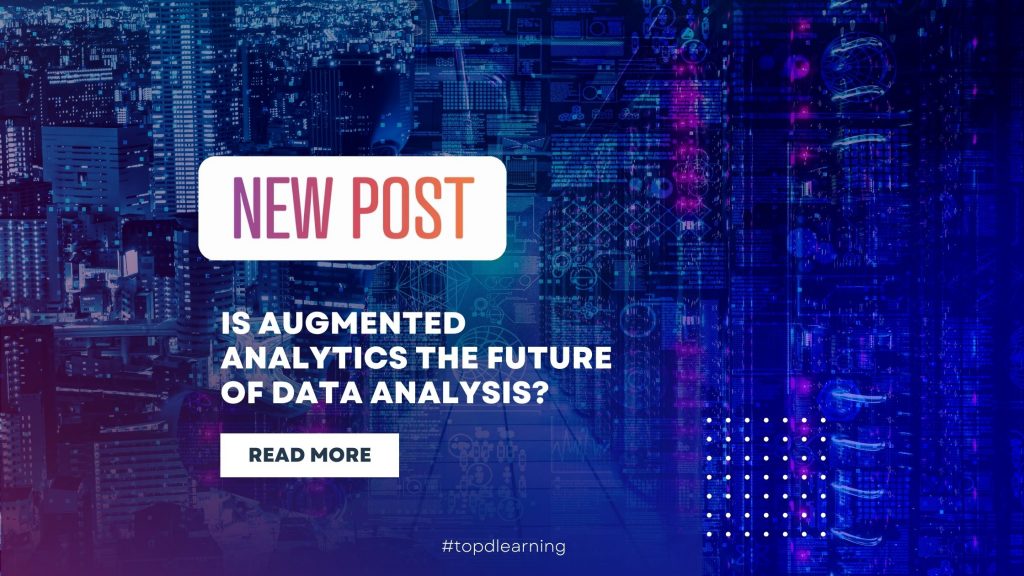Are you looking for a more efficient way to analyze your data? Augmented analytics is a growing field that promises to revolutionize the way we interact with data. Read on to learn more about what augmented analytics is and how it can benefit you.
Introduction
While advancements in technology have improved the way companies can analyze their data, the use of complex analytics tools and advanced analytics models have made it difficult to manage data analysis and reporting.
Augmented analytics can help you overcome these difficulties. This blog will explore the benefits of augmented analytics and how it can help companies make better use of their data, to make better business decisions.
Table of Content
- What is Augmented Analytics?
- Benefits of Augmented Analytics
- Augmented Analytics Use Cases
- Role of AI in Data Analytics
What is Augmented Analytics?
Over the past few years, data scientists have discovered that the speed of data gathering and processing, as well as the depth of the analysis, has a direct correlation to how impactful their insights will be.
This is why Augmented Analytics (AA) has become such a popular area of interest. Augmented analytics incorporates technologies like machine learning (ML) and artificial intelligence (AI) to improve data preparation, generate insights, and explain those insights – essentially “augmenting” how data scientists interact with data, as Gartner explains it.
Augmented analytics’s ability to quickly access vast data sets and derive insights from them is what makes it so appealing to data analysts and data scientists.
The intelligence it generates can uncover patterns and deviations in data that human analysts might miss, as well as eliminate potential human bias in recommendations or conclusions.
Benefits of Augmented Analytics
Augmented analytics can help improve all aspects of the data lifecycle, from data preparation to analysis and insight delivery. The main benefits of using augmented analytics in business are:
- Faster Data Delivery: Combining AI and ML with data science can lead to more robust data preparation, faster visualization of data, and quicker insights.
AI algorithms can replace manual data processing, provide automatic associations of different data sources, and help clean up the data. In the end, this can lead to better productivity. - Improved Insights: With augmented analytics (AA), data analysts can get contextual recommendations for investigations, rather than working with data to try and reach a specific conclusion.
The AI algorithms do the heavy lifting, uncovering correlations and outliers between datasets that might help create discoveries that the users may not have even considered. - Builds Trust: Machine learning algorithms have the ability to understand and remember user interactions with data. With every interaction, these algorithms are able to pick up on clues that help generate more relevant suggestions and insights for the user.
In turn, this builds trust in the data and analysis by the individual user and facilitates greater adoption of Augmented Analytics in the organization. - Builds Data Literacy: Augmented analytics is a game-changer when it comes to data accessibility and usability. By making data more accessible to a larger group of stakeholders, they are able to ask questions of the data along the way and get more value from both structured and unstructured datasets.
When everyday workers can get insights quickly, it improves data literacy across the organization and gives users confidence in their data-based conclusions – resulting in better business decisions all-around.
Augmented Analytics – Use Cases
The Forbes Business Development Council recently outlined several compelling use cases for AA. These use cases carry important lessons for companies to grow the value of the data they analyze.
- Customer base profiling: Data analysts who utilize AA can evaluate copious amounts of customer data to generate precise customer profiles that help segment the most profitable purchasers.
For example, delving into customers’ purchasing history and projecting sales interactions onto prospects of a similar segment helps create more accurate forecasting so that sales teams are able to meet demand adequately.
This systematic process allows for more reliable market predictions and provides suggestions for tailored sales approaches – giving your company an edge over the competition. - Proactive recommendations: By using augmented analytics, sales teams and e-commerce marketers can evaluate customer requests and see how a potential solution could meet the customer’s needs.
Even if a deal falls through, the team can learn from it by mapping it to a customer persona to create new recommendations and increase their chances of future success. - Predicting market trends: It’s never easy to spot market trends before they happen, but with augmented analytics, you can sift through huge amounts of public data to find potential market trends.
For example, machine learning analytics can analyze social media activity, public discussion boards, and product reviews to see if there is a need for a technology like blockchain for IoT solutions.
This way, companies can create the relevant services to meet the demands of the market before it even happens.
Role of AI in Data Analytics
There’s no question that AI and machine learning can help companies make huge leaps forward in their data processing and analysis.
However, despite knowing how important AI is for their growth, 76 percent of c-level executives say they struggle to scale their AI investments.
The key for these companies will be to make sure their data scientists and analysts have the skill-sets to use AI and machine learning technologies.
AI engineers are in high demand because they can be trained to create practical applications using intelligent agents. This includes knowledge-based systems and agent decision-making functions that power data analysis.
Machine learning experts are also in high demand because they can excel in supervised and unsupervised learning, mathematical and heuristic techniques, and hands-on modelling to develop machine learning algorithms that drive augmented analytics.
By building new skill sets, any company can ride the future wave of augmented analytics.
Conclusion
We hope this blog has helped you understand Why Augmented Analytics the Future of Data Analysis?
Kickstart your career with the right choice, learn AI & ML from one of the best IT training providers, TopD Learning.
We have a variety of Artificial Intelligence (AI) & Machine Learning (ML) courses plus a lot of different technologies & courses are available so you can learn what you want at your own convenience.
So what are you waiting for? contact us so we can help you in choosing the best course(s) for you!!


